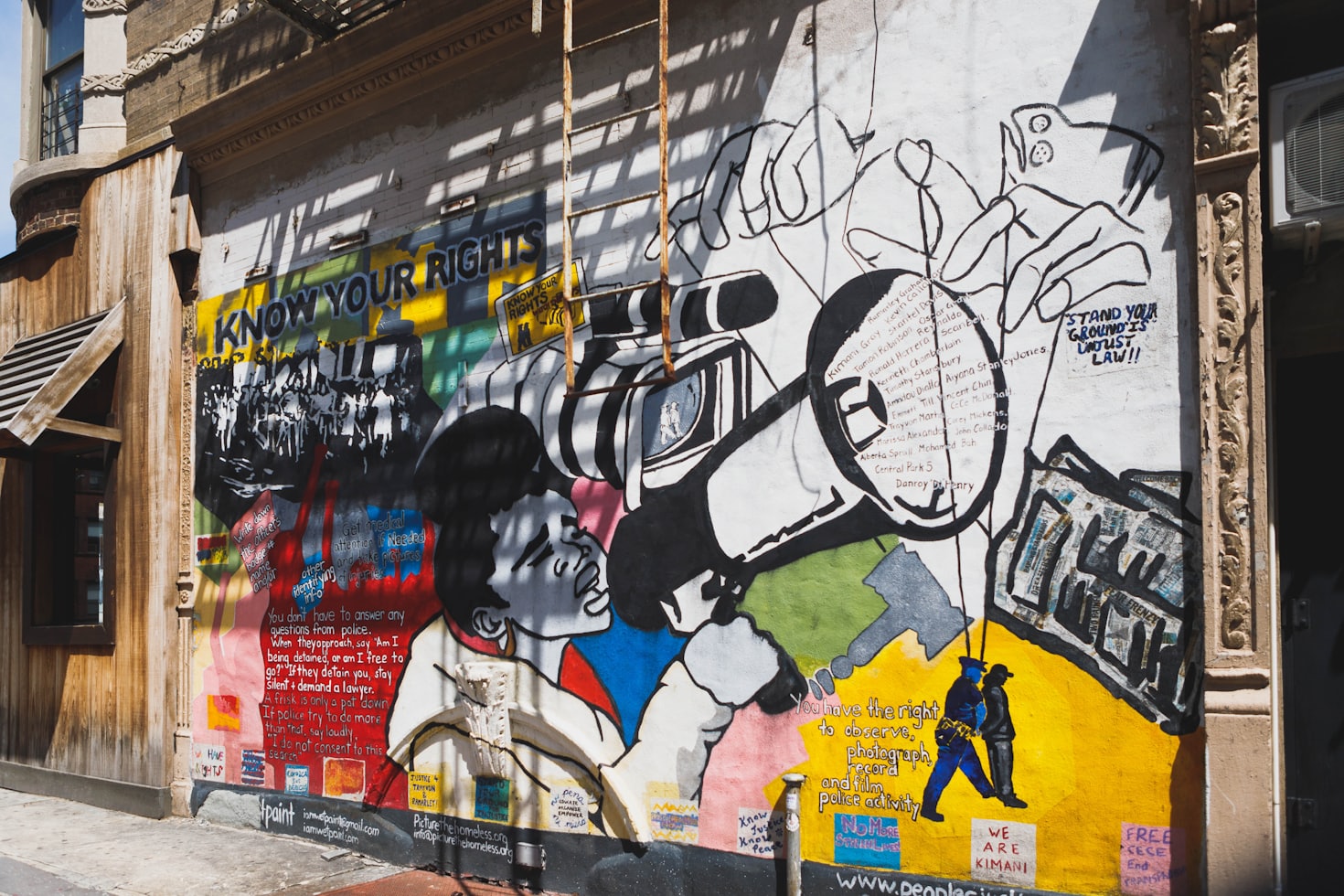Your cart is currently empty!
Why Creative Expression Matters More Than Ever
In an era where democracy faces unprecedented threats – from the January 6th insurrection to digital manipulation of elections – art has emerged as a vital force of resistance and truth-telling. Today’s artists aren’t just creating beauty; they’re documenting democratic backsliding, mobilizing protest movements, and imagining paths toward renewal.
While politicians wage wars through tweets and television, artists are fighting back through murals, installations, and digital works that cut through the noise of misinformation. Consider the Black Lives Matter street murals that transformed American cities in 2020, turning public spaces into powerful statements about racial justice. These weren’t just aesthetic choices – they were democratic actions that changed how we see and use our shared spaces.

The rise of AI-generated content and deepfakes has made authentic artistic expression more crucial than ever. When manipulated media threatens to distort reality, artists serve as truth-tellers, creating works that demand we confront uncomfortable realities. From Ai Weiwei’s direct challenges to authoritarianism to the anonymous street artists documenting protests in Hong Kong, art pierces through the fog of propaganda.
As social media platforms increasingly control public discourse, artists are creating alternative spaces for democratic dialogue. Virtual reality installations let viewers experience the reality of refugee camps. Interactive digital projects expose surveillance capitalism. Street artists use augmented reality to overlay protest messages onto corporate and government buildings. These aren’t just innovations in form – they’re new tactics in the fight to preserve democratic discourse.
The battle for democracy isn’t just happening in Washington or Silicon Valley. Local artists are transforming their communities through participatory projects that build democratic muscle. Community murals in gentrifying neighborhoods assert the presence of long-time residents. Guerrilla gardening projects reclaim public space for common use. Performance artists stage interventions that make visible the invisible struggles of marginalized groups.
From Spectator to Participant
Today’s political art demands more than passive viewing. Artists are creating works that require public participation, turning audiences into activists. Consider the proliferation of projection mapping protests, where artists and citizens together transform buildings into canvases for dissent. Or the rise of craftivism, where traditional crafts become tools for political organizing and community building.
As wealth inequality reaches historic levels, artists are fighting back against the commodification of public space and culture. Worker-owned art collectives provide alternatives to corporate galleries. Community land trusts preserve spaces for artistic expression in gentrifying neighborhoods. These aren’t just artistic endeavors – they’re democratic experiments in alternative economic models.
Urgent Action Needed
The threats to both art and democracy are immediate and growing. Public art funding faces continuous attacks. Authoritarian governments are targeting artists with increasing frequency. Social media algorithms suppress artistic content that challenges the status quo.
What’s needed now is not just appreciation of art but active support for artists on the democratic frontlines. This means:
Supporting local artists and art spaces facing displacement
Defending public funding for the arts as essential democratic infrastructure
Protecting artists facing political persecution
Creating and preserving spaces for controversial artistic expression
Participating in community art projects that build democratic capacity
When history repeats itself
When history repeats itself, make art. History shows that moments of democratic crisis often produce the most powerful art. This is our call to rise to this moment, create work that not only documents our challenges but helps us overcome them. This work reminds us that democracy isn’t just about voting – it’s about imagining and creating the world we want to live in.
As democracy faces existential threats, art isn’t a luxury – it’s a necessity. It’s time to recognize artists as essential workers in the project of democratic renewal and support their efforts accordingly. The future of our democracy may depend not just on what happens in our voting booths, but in our studios, streets, and digital spaces where artists help us imagine and fight for a more democratic future.
